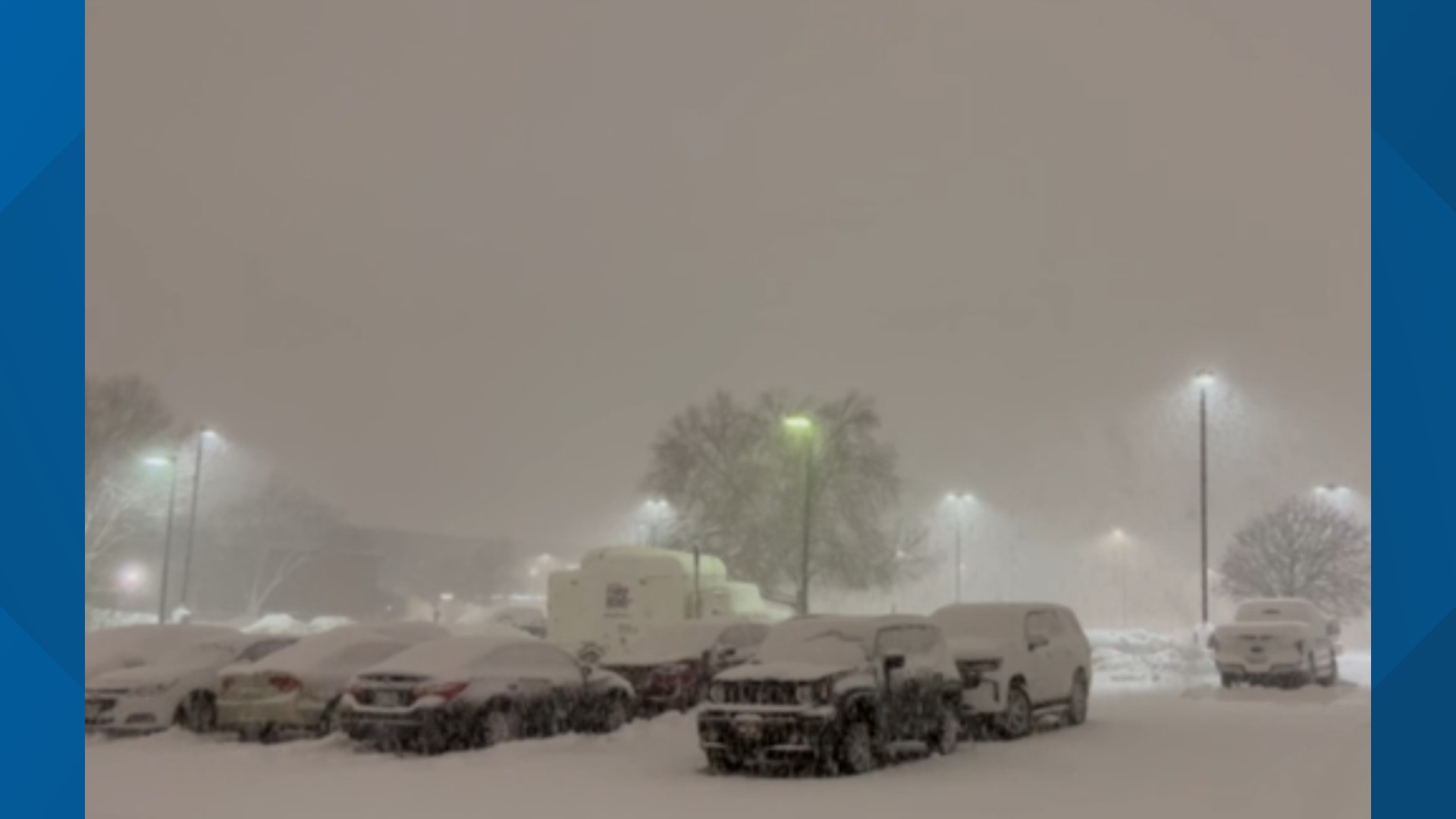DES MOINES, Iowa — A potent wave of atmospheric energy created several intense bursts of snow and low visibility in central Iowa on Wednesday night, prompting the National Weather Service in Des Moines to issue two rare Snow Squall Warnings.
The two warnings were just the second and third snow squall warnings ever issued by meteorologists at the Des Moines Weather Forecast Office.
The first one occurred in October 2020, shortly after snow squall warnings were first issued nationally.
RELATED: Heavy snowfall, low visibility result in first-ever snow squall warning for Des Moines metro
Wednesday night's snow quickly dropped 1-2" in central Iowa.
Cities like Waukee and West Des Moines reported amounts near 2 inches, while the tally for Des Moines International Airport came in at 1.2".
Parts of Jasper County, including Sully, also received more than an inch of snow.
These warnings were introduced to warn drivers for hazardous snow squalls, which are characterized by both heavy snow and strong winds that can create whiteout conditions.
Often these warnings are issued at peak travel times, and where the highest threat for rapidly changing visibilities are most likely to occur.
Similar to tornado and severe thunderstorm warnings, snow squall warnings are issued for small areas and short time frames.
Unlike typical snow, snow squalls have a sudden onset, typically going from no snow to heavy snow in a short period of time.
If a snow squall warning is issued for your area, it is time to get off the roads as soon as possible.
In the past, all snow squall warnings triggered Wireless Emergency Alerts (WEAs), which are free notifications delivered to your phone.
That's according to the National Weather Service.
However, this changed recently.
Only snow squall warnings with an impact tag of "significant" will trigger WEA alerts, following research that showed "public perception is that the NWS over-alerts SQWs and overuses WEA."
Neither of the snow squall warnings issued on Wednesday night in central Iowa included the "significant" tag, so they did not trigger WEAs on cell phones.

